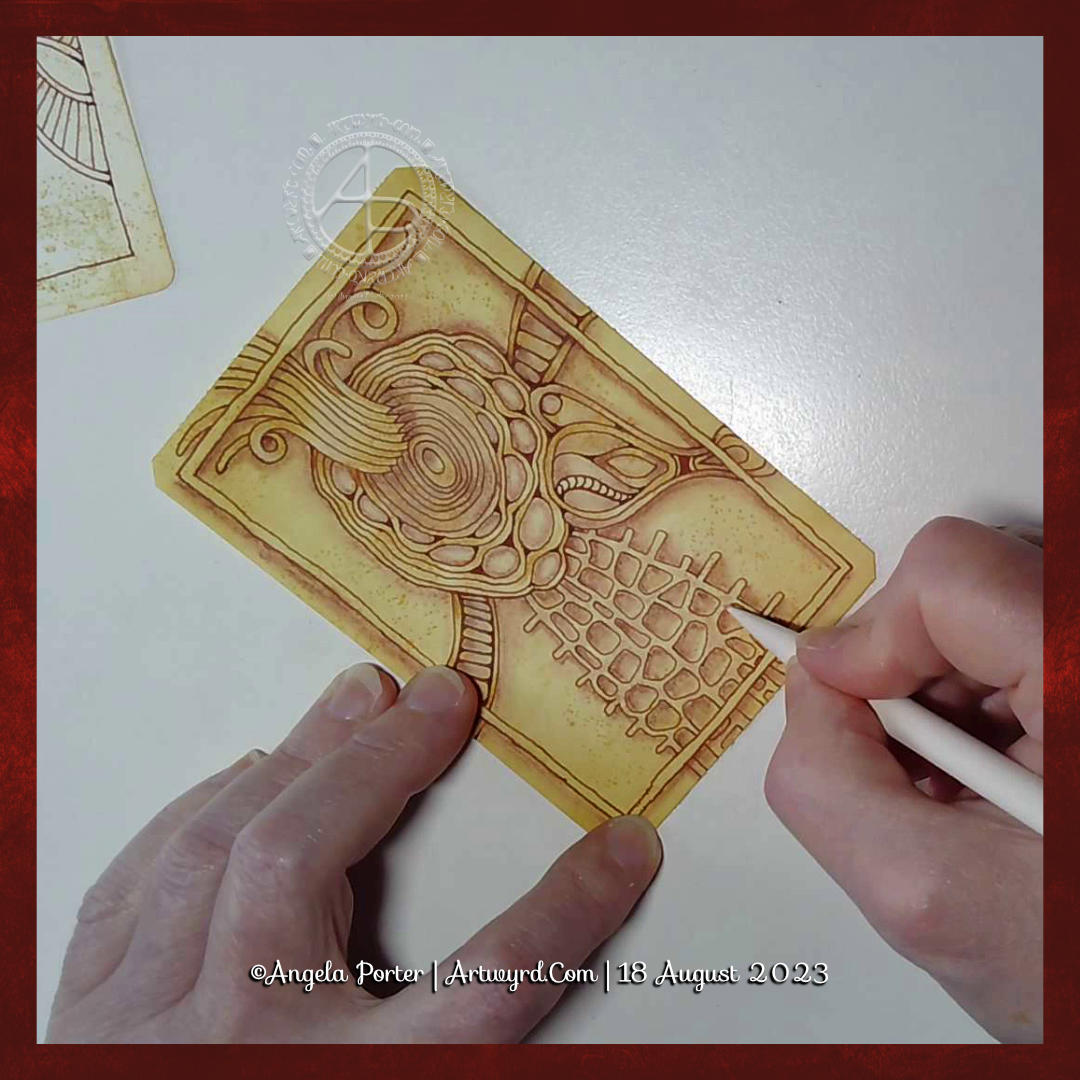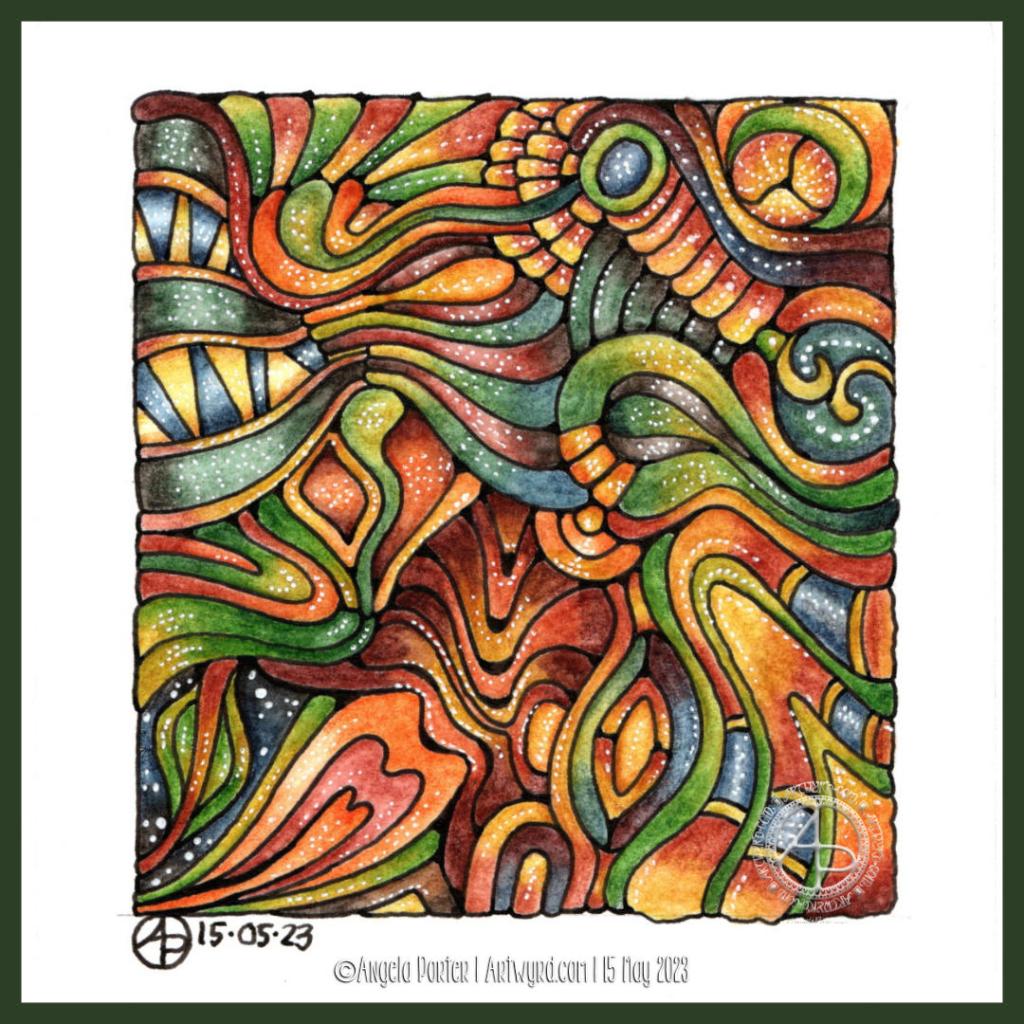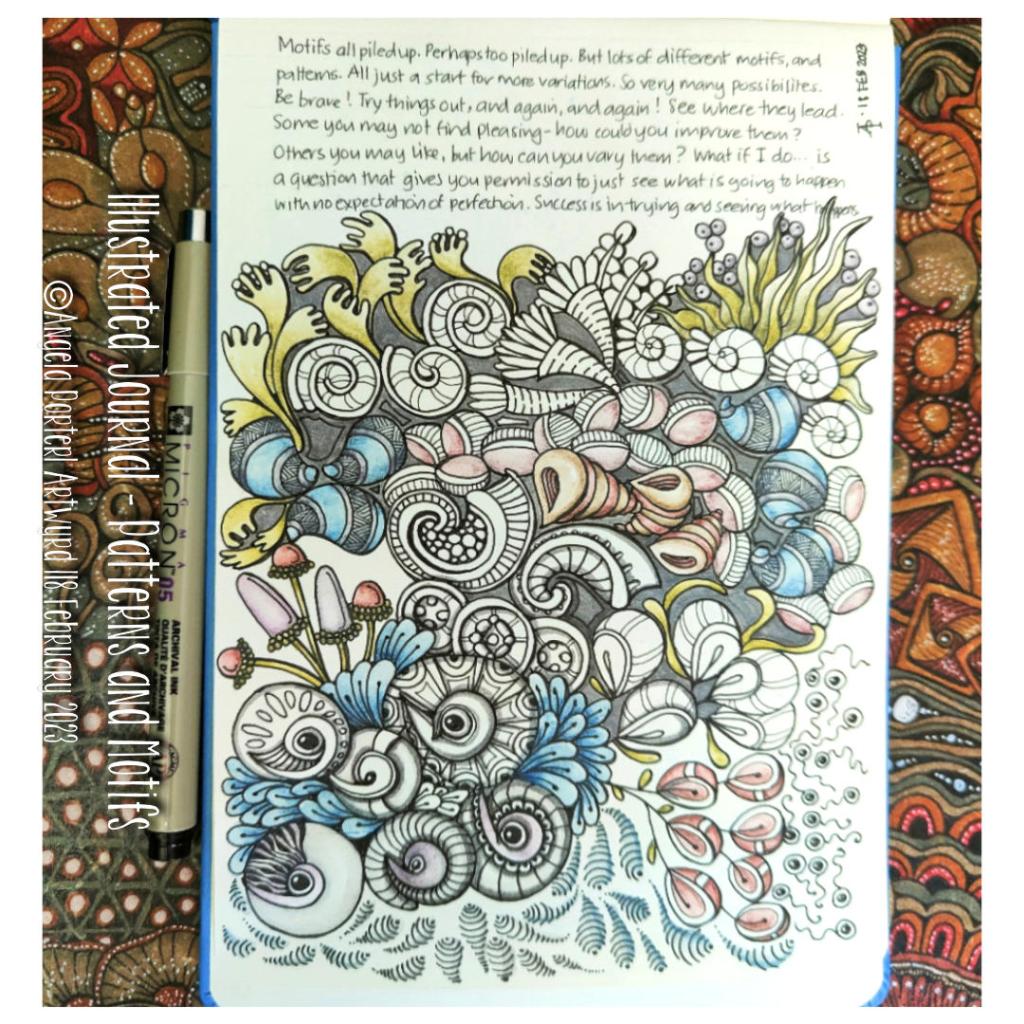




August has been a weird old month. I managed to get all the pages for my next colouring book called “Daydreams” done. The work was enjoyable, but the constant fatigue hasn’t been. All I have to do now is to add colour to two templates!
I’ve managed to get some videos done, too, three in the last few days! They can be seen on my YouTube channel @AngelaPorter.
I have rediscovered an old love and source of inspiration – Ernst Haeckel. I bought myself a collection of his work for my birthday. It fascinates me and entrances me – both the beauty, the detail, the stylised way of drawing and the science that goes with it! It’s all the things I love most about scientific drawings and illustrations. And that love has followed me through my life.
Unsurprisingly, I’ve dipped my toes into the richly inspirational waters of the Arts and Crafts movement. Again, the wonderfully stylised yet richly intricate designs fascinate me.
I’ve taken time since finishing the artwork for the book to indulge myself in sketchbook work, pattern and motif explorations, and the simple joy of drawing.
I had thought about creating a ‘junk’ journal. Well, more of a sketchbook cross art journal cross zibaldone/commonplace book cross journal cross elements of junk journaling.
As I started to work on it, I got so overwhelmed. So, I started to put together a disc-bound sketchbook. As I’ve added work to the sketchbook, ideas of how to incorporate elements of the various kinds of journals/sketchbooks start to make sense.
This tells me I really do need to stop getting overwhelmed and start with a drawing. Then, just trust that creative intuition will work its magic and meld ideas together – one at a time.
One thing at a time. One thing at a time, as in one focus at a time, is easy to do. I find it hard to juggle multiple projects. I have a couple or more on hold. I know if I start on them again, then that project may totally take over my focus. But starting at any one of the projects after a break can fill me with anxiety and fear of failure. I know that to do nothing is the only real failure, but picking up a project after a break from it and having to pick up the flow of it again …
Well, perhaps I need to learn to trust the creative and inspirational flow and put aside the fear, doubts, and negative inner voice. Easier typed than done!
Linked to this is I’ve started to read Julia Cameron’s “The Artist’s Way”. It’s surprising how much of this I recognise so far – I just needed the words for how I work. I am going to work my way through it, though. I have a feeling it will be very valuable to me. And some lined paper for the daily pages has arrived today, so no excuses tomorrow morning!











